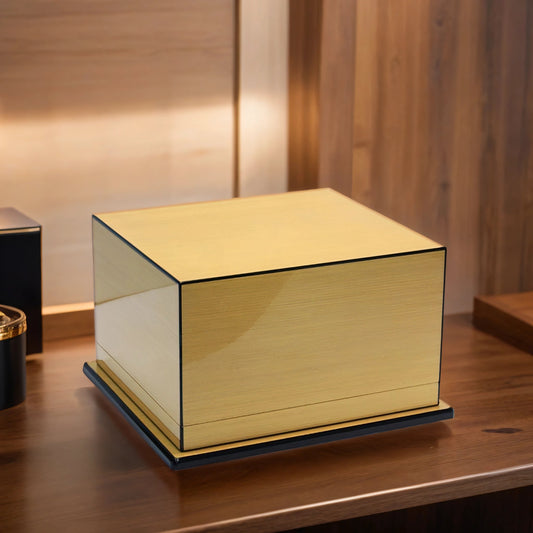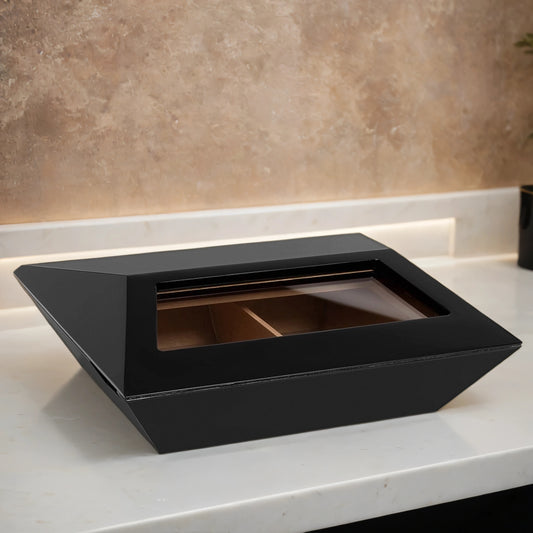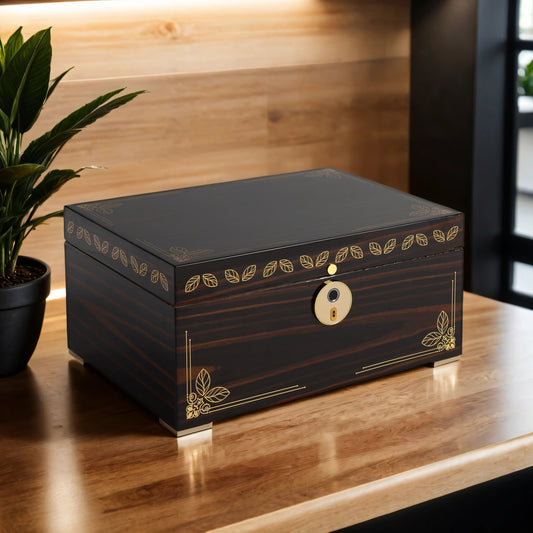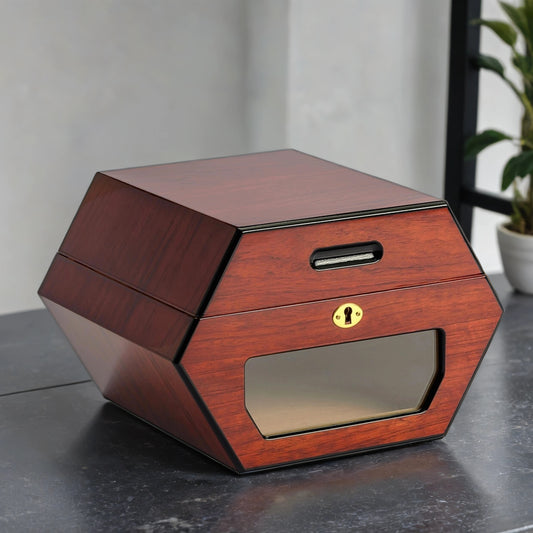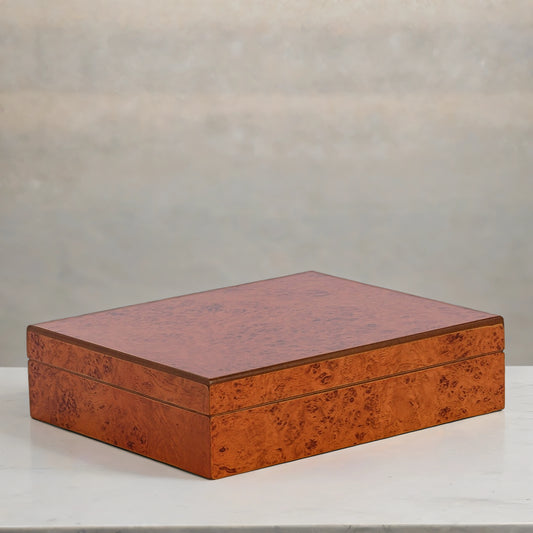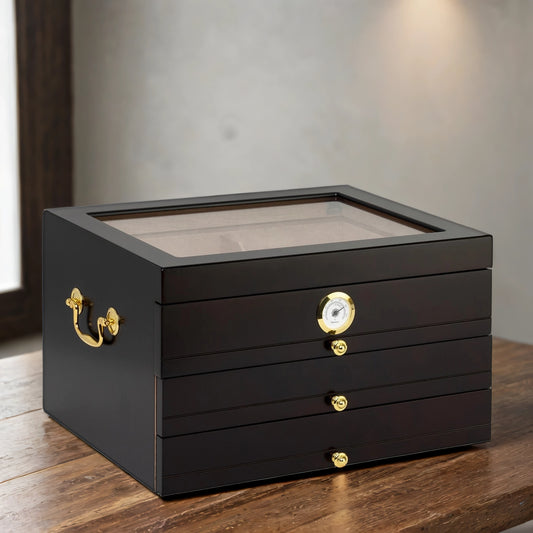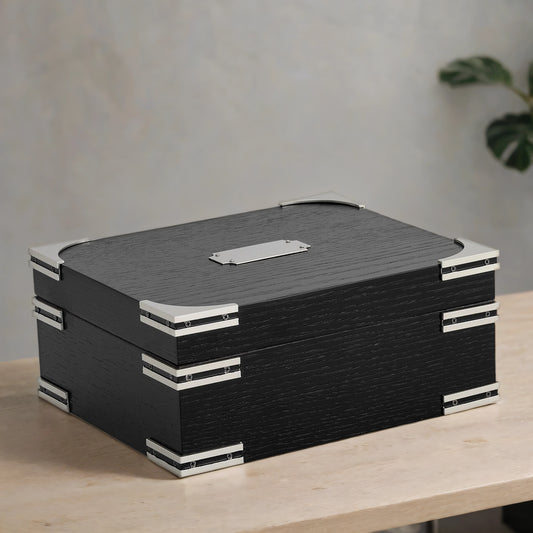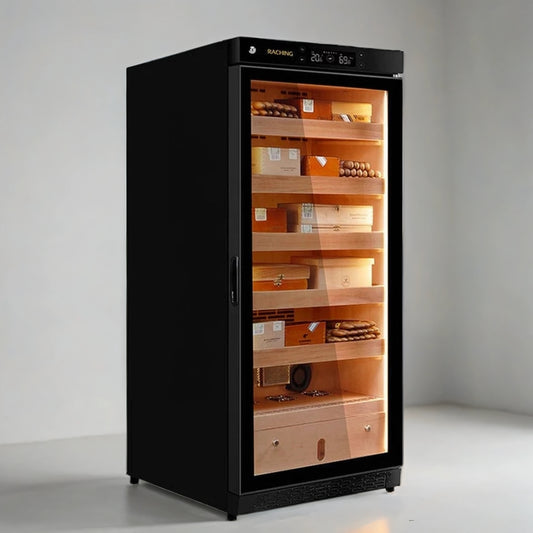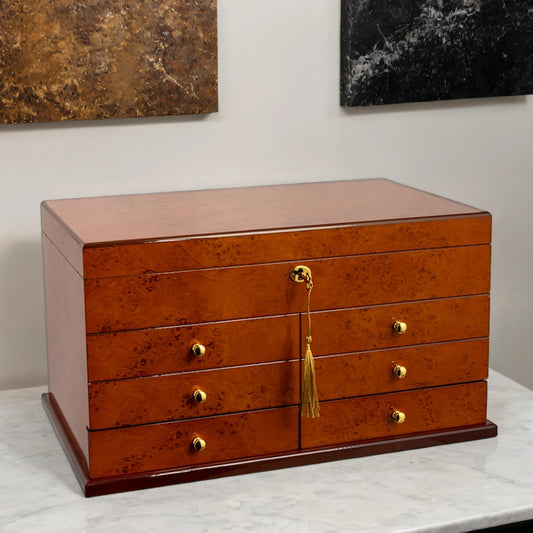
DIY Humidor Guide: How to Build a Humidor at Home
For cigar lovers who enjoy a good project, few things are more satisfying than building something with your own two hands. If you’ve ever wondered how to make a cigar humidor from scratch, this guide will walk you through the basics of what you’ll need, what to expect, and when it might make more sense to buy one instead.
Creating a DIY humidor takes patience, precision, and the right materials, but it can also be a rewarding way to deepen your appreciation for cigar storage.
Why Build a DIY Humidor
There are a few good reasons to build your own homemade humidor. For one, it lets you customize every detail, from the size and shape to the wood grain and finish. If you’re a woodworker or craftsman, the challenge itself can be part of the fun. A well-built humidor can also be a great personal gift or centerpiece for your cigar lounge.
That said, the main reason most people take on a DIY humidor project is curiosity. Understanding how a humidor works gives you a better sense of why cigars need consistent humidity and how proper storage protects flavor, aroma, and texture. Building one from scratch is essentially a lesson in cigar care, and for many enthusiasts, that alone makes it worth doing.

The Components You’ll Need
Before you start building, it’s important to understand what makes a humidor function properly. Every humidor, whether it’s a tupperdor, a small desktop cigar humidor, or a custom cabinet, relies on a few core components.
Hygrometer
A hygrometer measures the humidity inside your humidor. You can choose between analog or digital models, though digital versions tend to be more accurate and easier to read.
Humidifier or Boveda Packs
The humidifier regulates moisture levels inside the box. Traditional humidifiers use a sponge or crystal gel that needs to be recharged with distilled water or propylene glycol. If you want an easier option, use Boveda packs, which automatically balance humidity without maintenance.
Spanish Cedar for the Lining
Spanish cedar is the gold standard for humidor interiors. It naturally absorbs and releases moisture, regulates humidity, and deters tobacco beetles. It also gives off a subtle aroma that complements cigar tobacco.
Material for the Exterior
This is where your creativity comes in. You can use hardwoods like mahogany, walnut, or maple for a refined look, or go with something simple like a plastic storage container if you want to create a low-cost tupperdor. The exterior doesn’t need to be fancy, it just needs to support an airtight seal.
Materials for the Seal
Airtight seals are critical. Without one, your humidor will constantly lose humidity. You can achieve this using weatherstripping, magnets, locking hinges, or rubber gaskets. Once the box is assembled, test the seal by putting a flashlight inside of it: if light leaks through, air probably does too. Adjust until it’s tight and even.

Building the Humidor
Now that you have your materials, it’s time to build. The process depends heavily on your tools, skill level, and chosen design, but the overall concept remains the same.
Start by creating your outer box: it can be square, rectangular, or even cylindrical if you’re feeling ambitious. Once the structure is built, line the entire interior with Spanish cedar, making sure each piece fits snugly. Precision is key; even small gaps can throw off humidity control.
If you want multiple levels, you can build trays or shelves for organization. A removable cedar tray helps air circulate more evenly and allows you to separate different cigar types. Next, attach your lid using sturdy hinges and make sure it closes firmly against your seal material.
Lastly, install your humidifier and hygrometer. Position the humidifier on the underside of the lid or near the bottom to distribute moisture evenly. The hygrometer should be easy to read without opening the humidor too often.
If you prefer a more guided approach, you can use a set of free humidor plans to help with dimensions, assembly, and layout.
Pros and Cons of a DIY Humidor
Like any project, building a humidor comes with trade-offs.
Pros:
- Fully customizable in size, design, and finish.
- Great learning experience for cigar enthusiasts and hobby woodworkers.
- More affordable than buying a large humidor if you already have materials.
Cons:
- Takes significant time, patience, and precision.
- Small air leaks or poor seals can ruin humidity control.
- Lacks the advanced technology, convenience, and aesthetic finish of a professionally made humidor.
A DIY cigar humidor can work beautifully if executed correctly, but even experienced woodworkers sometimes struggle with consistency. Small errors in craftsmanship can lead to big fluctuations in humidity, which can damage your cigars over time.

Buying a Ready-Made Humidor
If you’d rather skip the trial and error, investing in a professionally built humidor can save you hours of frustration. Quality desktop models can be found for only a few hundred dollars, making them surprisingly affordable compared to the cost of materials and time needed to build your own.
Refined Traditions carries several options that balance price, design, and performance perfectly. Humidor Supreme models, for instance, are known for their patented seal technology, Spanish cedar interiors, and consistent humidity retention. They’re stylish enough for a living room or office, yet practical enough for everyday use.
You can enjoy the satisfaction of perfect humidity control without the maintenance headaches that often come with DIY builds. Plus, every humidor we offer comes with warranty coverage and customer support to ensure your collection stays protected for years to come.
Is a DIY Humidor Worth It?
The answer depends on what you value more: the experience or the outcome. If you love working with your hands and have the tools and patience to get it right, building a DIY humidor can be a deeply rewarding project. You’ll learn a lot about how cigars age and why stable humidity is essential.
But if your goal is to simply protect your cigars and enjoy them at their best, purchasing a reliable humidor is the smarter move. For the cost of a weekend project, you can own a beautifully crafted humidor that’s already tested, sealed, and ready to perform.
Whether you build or buy, the end goal is the same: keeping your cigars fresh, flavorful, and ready when you are. If you ever decide the DIY route isn’t for you, Refined Traditions is here to help you find a humidor that matches your style and your collection.

